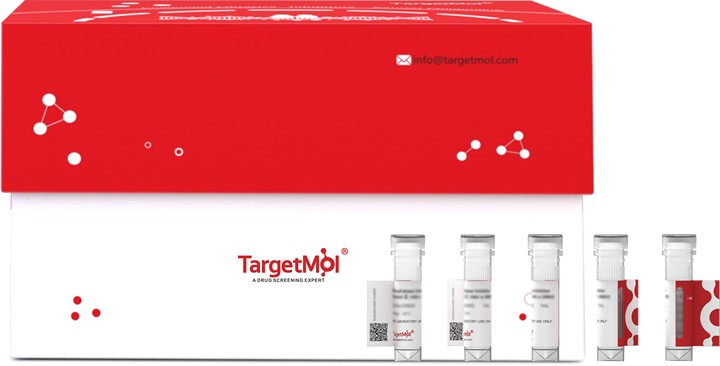Shopping Cart
Remove All Your shopping cart is currently empty
Your shopping cart is currently empty
SMN1 Protein, Mouse, Recombinant (His & Myc) is expressed in HEK293 mammalian cells with N-10xHis and C-Myc tag. The predicted molecular weight is 35.3 kDa and the accession number is P97801.

| Pack Size | Price | USA Warehouse | Global Warehouse | Quantity |
|---|---|---|---|---|
| 5 μg | $167 | 20 days | 20 days | |
| 10 μg | $278 | 20 days | 20 days | |
| 20 μg | $465 | 20 days | 20 days | |
| 50 μg | $878 | 20 days | 20 days | |
| 100 μg | $1,430 | 20 days | 20 days |
| Biological Activity | Activity has not been tested. It is theoretically active, but we cannot guarantee it. If you require protein activity, we recommend choosing the eukaryotic expression version first. |
| Description | SMN1 Protein, Mouse, Recombinant (His & Myc) is expressed in HEK293 mammalian cells with N-10xHis and C-Myc tag. The predicted molecular weight is 35.3 kDa and the accession number is P97801. |
| Species | Mouse |
| Expression System | HEK293 Cells |
| Tag | N-10xHis, C-Myc |
| Accession Number | P97801 |
| Synonyms | Survival motor neuron protein,Smn1,Smn |
| Amino Acid | MAMGSGGAGSEQEDTVLFRRGTGQSDDSDIWDDTALIKAYDKAVASFKHALKNGDICETPDKPKGTARRKPAKKNKSQKKNATTPLKQWKVGDKCSAVWSEDGCIYPATITSIDFKRETCVVVYTGYGNREEQNLSDLLSPTCEVANSTEQNTQENESQVSTDDSEHSSRSLRSKAHSKSKAAPWTSFLPPPPPMPGSGLGPGKPGLKFNGPPPPPPLPPPPFLPCWMPPFPSGPPIIPPPPPISPDCLDDTDALGSMLISWYMSGYHTGYYMGFRQNKKEGKCSHTN |
| Construction | 1-288 aa |
| Protein Purity | > 85% as determined by SDS-PAGE. |
| Molecular Weight | 35.3 kDa (predicted) |
| Endotoxin | < 1.0 EU/μg of the protein as determined by the LAL method. |
| Formulation | Tris-based buffer, 50% glycerol |
| Reconstitution | A Certificate of Analysis (CoA) containing reconstitution instructions is included with the products. Please refer to the CoA for detailed information. |
| Stability & Storage | Lyophilized powders can be stably stored for over 12 months, while liquid products can be stored for 6-12 months at -80°C. For reconstituted protein solutions, the solution can be stored at -20°C to -80°C for at least 3 months. Please avoid multiple freeze-thaw cycles and store products in aliquots. |
| Shipping | In general, Lyophilized powders are shipping with blue ice. Solutions are shipping with dry ice. |
| Research Background | The SMN complex catalyzes the assembly of small nuclear ribonucleoproteins (snRNPs), the building blocks of the spliceosome, and thereby plays an important role in the splicing of cellular pre-mRNAs. Most spliceosomal snRNPs contain a common set of Sm proteins SNRPB, SNRPD1, SNRPD2, SNRPD3, SNRPE, SNRPF and SNRPG that assemble in a heptameric protein ring on the Sm site of the small nuclear RNA to form the core snRNP (Sm core). In the cytosol, the Sm proteins SNRPD1, SNRPD2, SNRPE, SNRPF and SNRPG are trapped in an inactive 6S pICln-Sm complex by the chaperone CLNS1A that controls the assembly of the core snRNP. To assemble core snRNPs, the SMN complex accepts the trapped 5Sm proteins from CLNS1A forming an intermediate. Binding of snRNA inside 5Sm ultimately triggers eviction of the SMN complex, thereby allowing binding of SNRPD3 and SNRPB to complete assembly of the core snRNP. Within the SMN complex, SMN1 acts as a structural backbone and together with GEMIN2 it gathers the Sm complex subunits. Ensures the correct splicing of U12 intron-containing genes that may be important for normal motor and proprioceptive neurons development. Also required for resolving RNA-DNA hybrids created by RNA polymerase II, that form R-loop in transcription terminal regions, an important step in proper transcription termination. May also play a role in the metabolism of small nucleolar ribonucleoprotein (snoRNPs). |
| Size | Quantity | Unit Price | Amount | Operation |
|---|

Copyright © 2015-2026 TargetMol Chemicals Inc. All Rights Reserved.